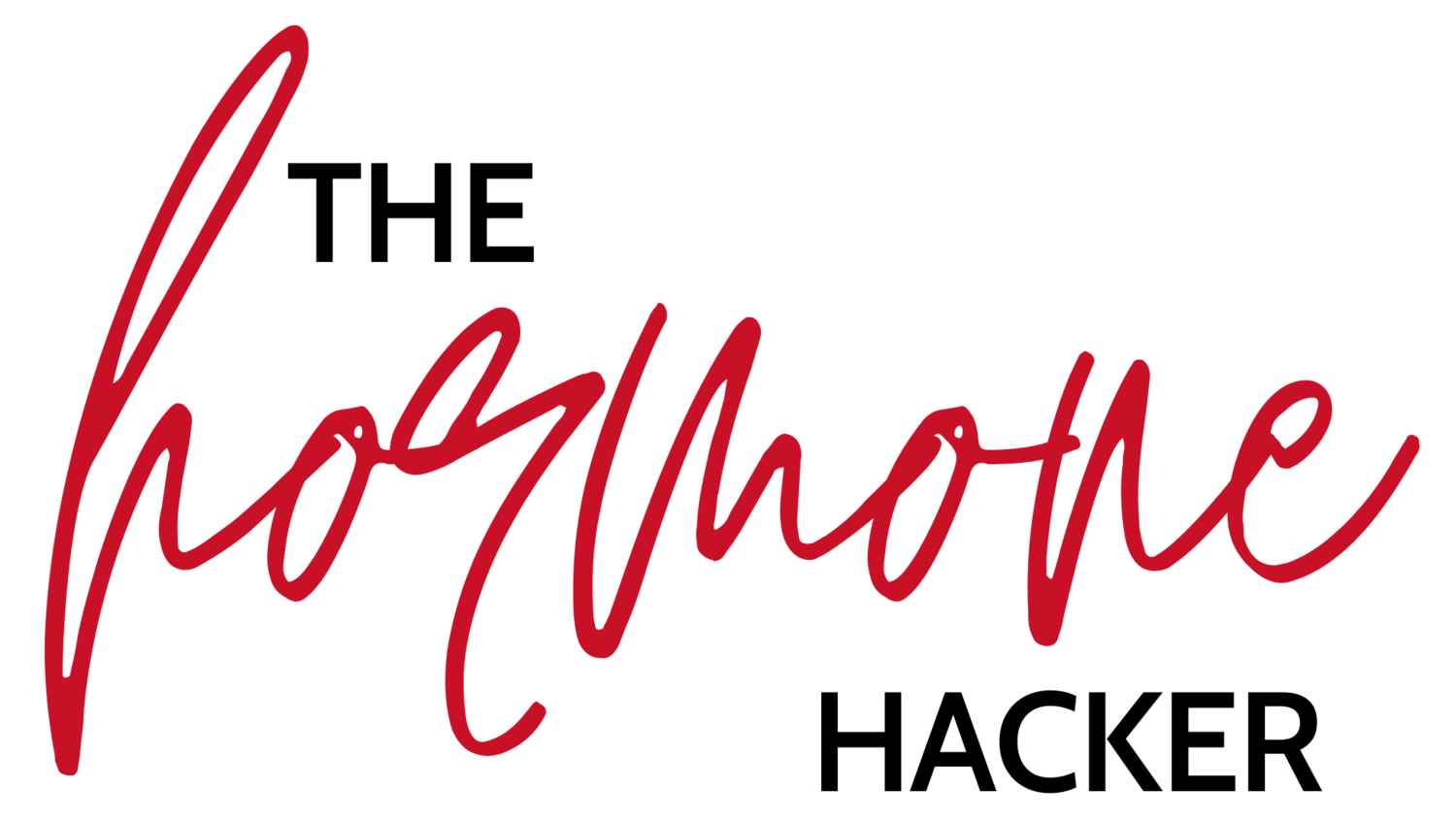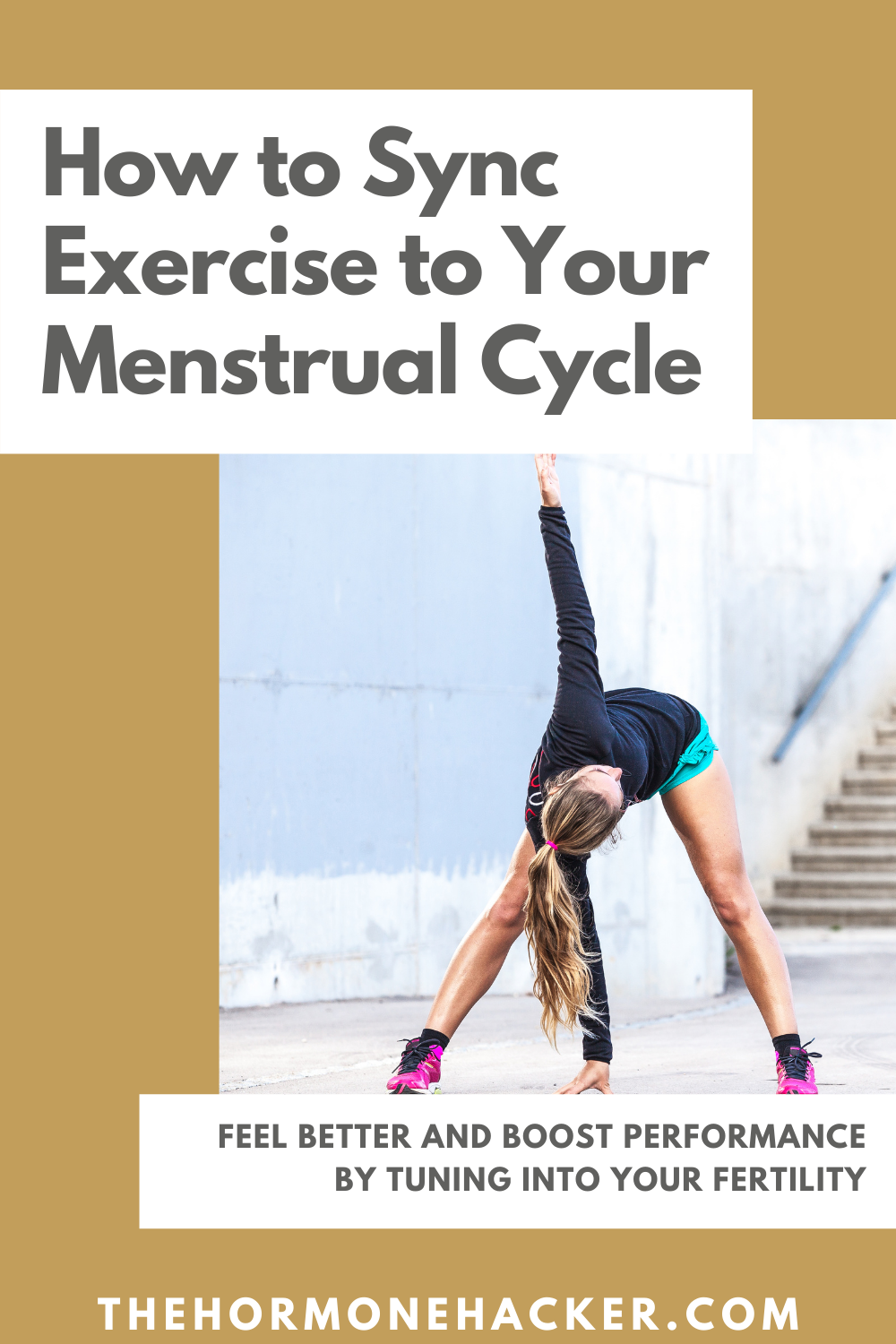News flash: your body wants different movement depending on your cycle phase.
Does any of this sound familiar?:
You LOVE to run, but you seem to hit a wall every few weeks when your body just can’t get in the running groove.
You hit the gym regularly, but temporarily feel weaker while lifting every few weeks.
Some days, you feel that your usual yoga class is WAY too slow-paced for you.
Some days you feel like a superhuman during your workout, but then out of nowhere, the next day the power comes screeching to a halt.
You start a new fitness endeavor and feel like total crap.
Exercise has made your period symptoms totally suck.
You feel zero willpower for intense movement.
Guess what— that’s your fertility speaking. AND it’s something you can use to your advantage!
Your Cycle and Fertility
There is no one-size-fits-all fitness plan.
If you ovulate, exercise goes beyond just doing the same routine week after week.
Over every single cycle, your movement needs change due to your fluctuating metabolism, caloric needs and cortisol. Your hormones are changing constantly!
The key is to tune into what your hormones are doing that day and that week— and exercise according to THAT, not according to a universal plan that doesn’t take into account your own unique body.
Plus, the overwhelming amount of fitness research is done on white men. Not women, not trans folx, not people like you who ovulate. So, while doing the same high-intensity workout every morning might work great for the guy who lives next door, it could actually damage your body or stop your progress if you try the same routine yourself.
It’s simply harder to conduct research when you have to take into account all the variables of your fertility. I get that it’s difficult to research ovulating people, but it’s a disservice to half the population to ignore it! In the meantime, you need to read between the lines of the latest research if it’s not done for people like you. Instead, look at how your cycle influences your fitness.
When to push it:
Your body is going to respond better to high-intensity movement during the follicular phase (pre-ovulation). During the follicular phase:
Your metabolism is slower than during your luteal phase. (That’s why you feel hungrier before your period— your metabolism speeds up after ovulation.) So, your body welcomes the metabolism-revving of high-intensity exercise in the first half of your cycle.
You are better at gaining muscle.
Your temperature is lower than in your luteal phase (so you won’t get as hot while working out).
As you approach ovulation, peaking estrogen and testosterone make you feel awesome. You get high energy and endurance, and you feel ambitious to reach your goals.
Got big fitness goals? Go get ‘em in the first half of your cycle! But watch out for ligament tears— the higher level of the hormone relaxin will loosen your ligaments, so it’s easier to tear something near ovulation. (Many people have torn ACLs during this phase!)
When to ease back:
After ovulation, your body needs to tone down the intensity and increase recovery. In fact, during the luteal phase, you need more time to properly recover after exercise. During the luteal phase:
Your metabolism is faster than before ovulation. You’ll need more calories (and will use more of them) and will feel warmer.
High-intensity workouts can be counterproductive.
You might still have good endurance for low-intensity exercise (e.g. go for a long, easy run instead of cardio sprints).
Your body is less likely to pull a muscle since relaxin is lower.
Energy wanes. Progesterone increases after estrogen and testosterone drop, so you’ll feel chiller and less energized.
Exercise for Each Phase
Menstrual Phase (your period)
Keep it mild and focus on recovery! Even if you feel pretty good, this is a great monthly opportunity to slow down be more gentle with yourself. Although, if you have a big race or athletic event, don’t sweat it— your hormone levels can work in your favor, so long as you don’t have rough symptoms.
Try:
Walking
Yin or restorative yoga
Remember— if you rest and restore now, you’ll feel amazing the next couple weeks!
Follicular Phase (between your period and ovulation)
Start harnessing your increased energy! It’s a good time to try something new (like that class you’ve had your eye on, or a new running route) and to do ease into higher-intensity movements.
A good time of day to exercise during this phase is mid-day, so you can take advantage of good cortisol levels and lower estrogen.
Try:
Running or other cardio
New workouts, classes or environments
Higher-intensity workouts
Dancing
Start thinking about the coming week so you can schedule any BIG workouts or adventures.
Ovulatory Phase
This is the time to push for a personal record! You’ll have peak energy and motivation thanks to the rise in testosterone. You might also be attracted to social groups, so run with a pack that can push you or plan a hike with a fun circle of friends.
The morning is a great time to workout around ovulation since motivation is high and you have energy to burn.
Try:
High-intensity interval training (HIIT)
Heavy lifting or bodyweight exercises
Climbing the mountain you’ve been eyeing (or another outdoor activity)
Hot or power yoga
An active social activity
Just avoid burning out from pushing too hard or far. And don’t forget to eat and refuel!
Luteal Phase (between ovulation and your next period)
This phase is ideal for tending to anything you typically neglect. Think injury recovery, deep stretches or little muscle groups you forget about. You’ll turn back inward, so you may prefer working out solo instead of in a group setting. Plus, it’s a good time to work through anger or emotions on your own. Exercise therapy!
Towards the start of this phase, you may feel similar to the ovulatory time and feel best exercising earlier in the day. As the days pass, you’ll slip towards gentle evening movement to wind down and support healthy sleep (especially if you experience PMS!).
Try:
Pilates
Slow flow yoga
Lower-intensity strength training
Actually doing the exercises your physical therapist told you to
Slow, easy running, biking or paddling
Walking
If you start feeling PMS symptoms, take special care to feel more comfortable. For example, sore boobs might keep you from doing high-intensity jumping exercises; listen to them! And also wear supportive clothing.
Not getting a period?
Learn the signs of hypothalamic amenorrhea and Relative Energy Deficiency in Sport (RED-S, formally called the Female Athlete Triad).
If you exercise too much and don’t eat enough, it is so harmful to your health and fertility. You are not doing your body or mind any favors, and you increase your risk of long-term issues.
Your period is a vital sign. A healthy cycle promotes a healthy heart, brain, bones, stress response and mindset. Even if you don’t want children, you need to be supporting your fertility for overall health.
Work with an expert to get your fertility back, and I promise you’ll feel SO much better!
A few final reminders…
By syncing your exercise to your cycle, you can improve your fitness and feel awesome both physically and mentally.
If you’re fatiguing yourself from regular exercise, you are NOT making your body healthier or stronger.
It is counterproductive to push through workouts when your body is screaming “NO!”
Your health is more than just exercise. Work with an expert to help you find a lifestyle to make you your most well and happy.
Now, go get movin’ the way your cycle tells you to!
What is your favorite physical activity? What challenges do you face when you try to do it during different phases of your cycle?

